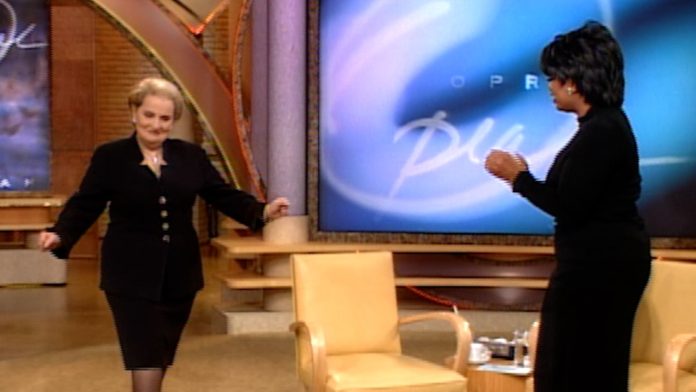Eight months ago, after a decade of disappointing dating, I fell in love with a wonderful person. Not a woman. Not a man. My beloved identifies as gender nonbinary, masculine of center. Denise uses the pronouns “they” and “them,” and cringes when called “lady,” “woman,” or “ma’am.” They call me their girlfriend. I call them my person.
I’m not going to lie: Lifelong progressive politics notwithstanding, learning the new gender rules has not been easy for me. I have three excuses. One, I’m a lesbian; if my lover isn’t a woman, who and what am I? Two, I’m a writer, so using “they” and “them” to describe a single person feels like mangling the language, abusing the tool of my trade. Three, I’m 71 years old, and lately, cranky phrases like “What’s so bad about the old way?” keep tumbling from my lips.
If gender fluidity is this challenging for me, in love in Los Angeles in 2022, imagine how it was for Roy Hudgins, the intriguing subject of journalist Casey Parks’s riveting first book, Diary of a Misfit. Roy was born a girl named Delois in rural Delhi, Louisiana, in the 1950s. Tormented by his classmates for presenting as a boy, Roy became a country music singer, performing on his front porch for the residents of Delhi—including a lonely newcomer from Mississippi named Louise Huffman, who became his friend.
More From Oprah Daily

Fast-forward 60 years and 40 miles east to West Monroe, Louisiana, pop. 13,000. Louise is now a churchgoing cotton picker, mother of Rhonda Jean, grandmother of Casey. One day in 2002 Casey comes home from college and confesses that she kissed a girl. And liked it.
“My mom ran to the bathroom and I ran after her,” Casey Parks writes on the first page of Diary of a Misfit. “I could lose my job,” [my mother] said, half whispering, half crying. “Mom,” I said, “I’m not going to be gay anymore.”
To Parks’s surprise, her grandmother defends her to her mother. “Some people eat hot dogs, and some people eat fish,” her grandmother snaps at Parks’s mom. “She likes women, and you need to get the fuck over it.”
As Rhonda Jean’s opioid addiction escalates, ravaging her body and mind, she evinces less and less interest in getting over it. So, as many gay people do, Casey Parks flees her hometown for the relative ease and safety of a liberal city—in her case, Portland, Oregon. She spends the next decade reporting on LGBTQI issues for The Oregonian, geographically and spiritually bouncing between Portland and West Monroe, looking for answers to her big questions. Is it immoral to be a lesbian? Can she be a Christian and also be gay? Is she still a loyal Southerner, given that the South doesn’t love her back? On a visit to West Monroe, her grandmother surprises her again.
“I grew up across the street from a woman who lived as a man,” her grandmother announces, seemingly out of the blue.
Stunned by this revelation about the neighbor who called herself Roy Hudgins, aching to believe that if Roy could be accepted, so could she, Parks peppers her grandmother with questions. “What did you think of Roy? Were you shocked? Was Roy happy?”
“Honey, it didn’t matter. Everyone loved Roy, because he was a good, Christian person,” her grandmother replies. When Parks asks her grandmother what happened to Roy, her grandmother replies that although she and Roy had been best friends, they’d lost touch half a century ago.
“His whole existence was a mystery. It’s eaten at me all these years. Am I going to die without finding out?” Parks promises her grandmother, “I’ll find out about Roy.”
________
Diary of a Misfit follows Casey Parks through her 20s and 30s, years during which she decides to turn her search for Roy into a documentary film. She assembles a three-person, grant-funded crew and brings them on several trips to rural Louisiana, knocking on doors, interviewing people who knew Hudgins, leaving phone messages in her deepest Louisiana accent, hoping her former neighbors won’t recognize Parks as the Portland-dwelling lesbian she is.
Parks makes no bones about the dual motivations that drive her “memoir and mystery.” Her journalist self set out to explore the life and fate of “a woman who lived as a man” in the place that had formed and fractured both Parks and her subject. That quest alone would justify the decade Parks spent researching and writing the book. But what gives Diary of a Misfit its unique and lasting impact is the task undertaken and accomplished by Parks’s memoirist self: to understand and rid herself of self-loathing.
The very intensity with which Parks pursues Roy’s story reveals and reflects the depth of Parks’s longing to love herself despite the cruel, homophobic forces that turned both Parks and Roy into misfits.
“Some terrible things happened to Roy,” a neighbor tells Parks during an interview. “Everybody knowing she was female but dressed like a man… Some boys I know, all of them are probably dead by now, they took her down and pulled her clothes off. And looked at her.… It broke Roy. It killed her.”
Another interviewee called Roy “a morphydite.” “Half man, half woman,” he said. “Roy had the top part of a woman. I mean, you know, breasts.”
During her research trips, Parks unearths clues just tantalizing enough to keep her on the hunt, but not conclusive enough to resolve her film’s narrative arc—or her own identity crisis. After 10 years of searching, Parks locates Roy’s nursing home records, and ultimately his voluminous journals, collectively titled “Diary of a Misfit.” But despite these hard-won bits of evidence, Parks still lacks the answers she seeks. Was Roy put up for adoption or kidnapped as a small child? How did Roy cope with being a “misfit” within the world that had violently rejected him? Why is there no record of Roy’s death? How did he die, and why the persistent rumors that he was murdered?
Without these answers, how can Parks finish her film?
And without finishing her film, how can Parks hold her head up—in West Monroe, in Portland, in the mirror?
Utterly discouraged, in 2017 Parks applies for, and is accepted into, the master’s journalism program at Columbia University. There, she transforms her film project into the book titled Diary of a Misfit: A Memoir and a Mystery. Her moving, empowering, searching tale is one of the modern American South, of mother-daughter breaking and bonding, of the pernicious effects of homophobia and bullying and hate.
“I had hoped reading Roy’s diaries would settle something inside me,” Parks ends the book. “If I could solve his mysteries, I thought, I would decipher my own. But I understand now that most of what haunted me before might haunt me forever.”
Forever? Maybe not. If an old dog like me can stumble into love with a human being outside the bounds of the gender binary, and Casey Parks can win fellowships and accolades, as she has, for her personal/political account of the costs of gender bias, maybe there’s hope for acceptance, and self-acceptance, for people like Parks and Roy. In any case, Parks has written a memoir that will serve as a beacon for many others still yearning to no longer feel like misfits.
This content is imported from OpenWeb. You may be able to find the same content in another format, or you may be able to find more information, at their web site.









